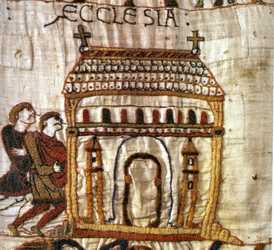For this church:  |
 NewboldChurchNottingham Archdeaconry East Bingham Deanery IntroductionNewbold lay just to the north-east of Kinoulton, close to the modern-day Hall Farm, and the two settlements either merged at some point or Newbold was abandoned. At the Domesday survey of 1086 a priest and a church are recorded here. It is known that a chapel known as ‘Newbolt Chapel’ was still in existence in the late 18th century. At this time the chapel was used by parishioners of Kinoulton village following the demise of St Wilfrid’s Church, which then lay in ruins at the western end of Kinoulton. The exact location of Newbold chapel is now unknown, though it is probable that it lay to the north side of Hall Lane amongst the earthworks that now define the lost medieval village. About 1189, Pagan de Vilers made over to the Archbishop of York and his successors the church at Newbold. The Fanecourt family granted a capital messuage, demesne lands, a windmill, fishponds and manorial rights in Hickling and Kinoulton to Thurgarton Priory but subsequently these were granted back in return for 18s a year, but meanwhile the Vilers obtained licence to have a chantry in the chapel of their mansion at Kinoulton, subject to the usual condition that the principal feasts be observed in the parish church of Newbold. As late as 1846, the Tithe Commissioners were still referring to ‘Kinoulton-cum-Newbold’ in their meeting of that year. In the scheduled area between Ashgate House and Manor Farm a series of three rectangular enclosures or crofts are aligned with Hall Lane which are defined by a number of low banks surviving up to a height of approximately 0.75m. At the northern ends of the crofts the ground rises and is slightly terraced where another series of banks define two smaller rectangular features: it seems likely that the former church lay within this area, as yet unexcavated.No picture of this church is known. The image on this page is a representation of a church (actually Bosham Church) taken from the Bayeux Tapestry. Particular thanks to Dr Christopher Brooke for research on this entry |





